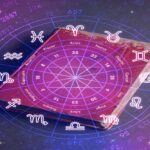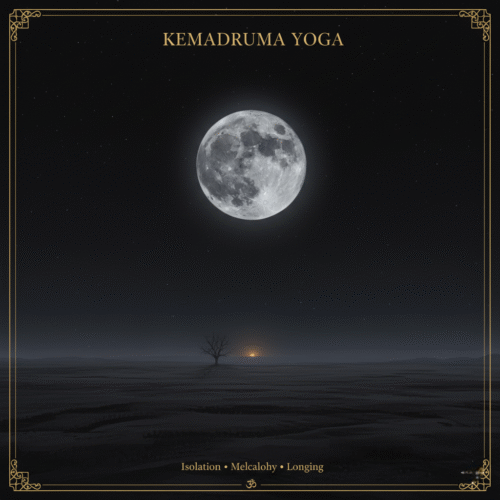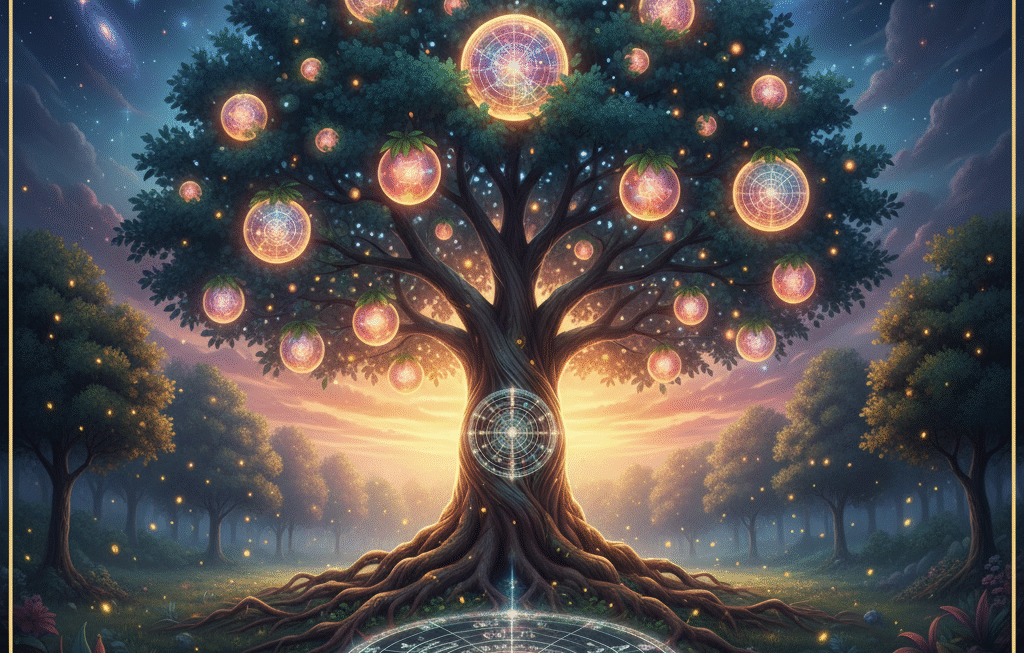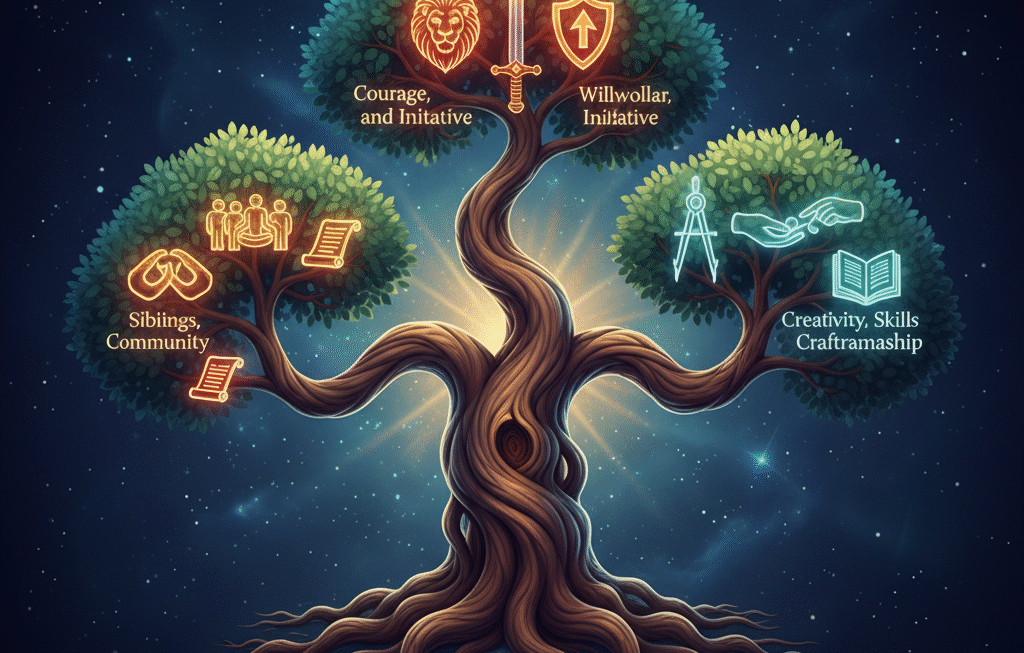Is there an astrological signature for feeling alone, even in a crowd? Can the stars reveal a potential for deep inner isolation or a life path marked by struggle and lack of support? In the complex lexicon of Vedic astrology (Jyotish), while many Yogas promise fortune and fame, others highlight potential challenges. One of the most discussed, and often feared, of these difficult combinations is Kemadruma Yoga. Understanding this specific Yoga is essential for recognizing potential vulnerabilities related to the mind and emotional well-being within a horoscope. This article explores the formation and effects of the Kemadruma Yoga, the conditions that cancel its difficult results, and its true significance in a natal chart.
Astrological Yogas: Beyond Simple Interpretations
Before we examine the isolated Moon, let’s briefly revisit the concept of Yogas. In Jyotish, a Yoga is a specific planetary configuration formed through placement, conjunction, or aspect. These planetary yogas are significant because they create unique astrological circuits, modifying how planetary energies manifest and indicating specific life potentials.
Understanding these combinations in astrology allows for a deeper reading of the chart, revealing nuances that go far beyond the interpretation of individual planets in signs and houses.
What is Kemadruma Yoga? The Un-Nourished Mind
(Opinion): Kemadruma Yoga is generally considered an inauspicious yoga in Vedic astrology, primarily indicating potential for loneliness, mental distress, lack of emotional support, poverty, and significant struggles in life. It arises when the Moon, the significator of the mind and emotions, finds itself isolated in the chart without immediate planetary support.
(Reason): Why does this isolation have such potentially challenging effects? The Moon (Chandra) is arguably the most crucial planet for our overall well-being. It represents our mind (Manas), emotions, feelings of security, nurturing capacity, connection to the public, and our ability to receive nourishment (both physical and emotional). In Vedic thought, the Moon needs support.
When there are no planets (with specific exceptions) immediately flanking the Moon (in the 2nd and 12th houses from it), it signifies that the mind lacks immediate resources, comfort, or stabilizing influences. It’s like a person standing alone without neighbours or immediate family to rely on. This lack of support structure can leave the mind feeling vulnerable, insecure, restless, and unable to find consistent emotional grounding, leading to the various difficulties associated with the yoga.
(Example): An individual with a strong, uncancelled Kemadruma Yoga might experience life as a constant struggle. They may feel deeply misunderstood or perpetually lonely, even when surrounded by people. Financially, they might face persistent difficulties in accumulating wealth despite hard work.
Mentally, they could be prone to anxiety, depression, or a feeling of aimlessness. They might wander from place to place or job to job, seeking a sense of belonging or stability that seems elusive. Think of someone who, despite possessing talents, seems unable to find consistent success or emotional contentment, always feeling like an outsider or lacking the support needed to thrive.
(Opinion/Restatement): Therefore, Kemadruma Yoga is fundamentally an isolated moon yoga. It signifies a lack of immediate planetary support for the mind’s functions, leading to potential emotional vulnerability, instability, and difficulties in finding nourishment and security in life. It points towards a lonely moon scenario astrologically.
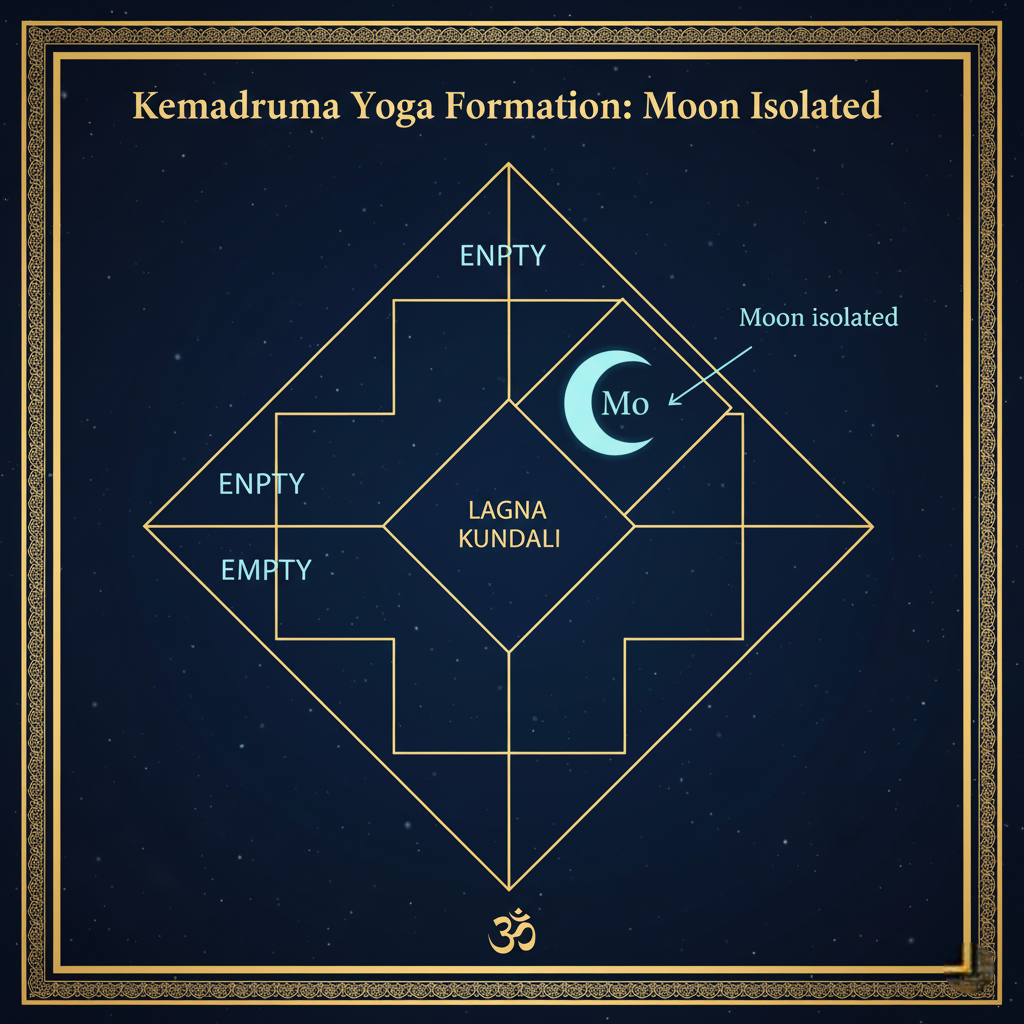
Isolated Moon Yoga: The Formation Rules
(Pattern Spotting): How do you identify this challenging isolated moon yoga in a birth chart? The primary rule is straightforward, though there’s a secondary condition sometimes included.
Primary Rule:
Kemadruma Yoga is formed when there are no planets occupying the 2nd house OR the 12th house counted from the Moon.
Important Exclusions:
- The Sun is generally excluded from this calculation. Its proximity to the Moon is common, and its fiery nature isn’t considered supportive in the way other planets are.
- Rahu and Ketu (the lunar nodes) are also excluded. As shadow points without physical bodies, they are not considered capable of providing the necessary support to negate Kemadruma.
So, if the house immediately preceding the Moon’s house and the house immediately following the Moon’s house are both empty (excluding Sun, Rahu, Ketu), the basic condition for Kemadruma is met.
Secondary (Sometimes Debated) Condition:
Some classical texts add a further condition for Kemadruma: that there are also no planets (excluding Sun, Rahu, Ketu) in any Kendra (1st, 4th, 7th, 10th house) from the Moon. This implies an even greater degree of isolation, where the Moon lacks support not only from adjacent houses but also from angular positions. However, the lack of planets in the 2nd/12th from the Moon is the universally accepted core definition.
Isolation Yoga: Interpreting the Results
(Value): What are the classical results attributed to an un-cancelled Kemadruma Yoga? Vedic texts associate this isolation yoga with significant life challenges:
- Poverty and Financial Struggle: Difficulty accumulating wealth, facing constant financial hardship.
- Sorrow and Unhappiness: A life marked by emotional distress, lack of contentment, and sadness.
- Lack of Intelligence or Learning: Potential difficulties in education or intellectual pursuits (as the mind lacks support).
- Ill-Repute or Misunderstanding: May face public disapproval or be frequently misunderstood.
- Menial or Servile Work: Engaging in low-status or difficult labor.
- Lack of Support: Feeling unsupported by family, friends, or society.
- Difficulties with Spouse and Children: Potential challenges in forming or maintaining close family bonds.
- Wandering or Unsettled Life: Restlessness, frequent changes in residence or profession.
- Poor Hygiene or Appearance: Neglecting self-care due to mental distress.
It’s crucial to understand that the core issue revolves around the unsupported mind. The lonely moon feels insecure and un-nourished, which then manifests as external struggles in various life areas.
Mythbusting: The Crucial Cancellation (Bhanga) of Kemadruma Yoga
(Engagement): Now for the most important part of this discussion, the “code-breaker” insight that offers immense relief: Kemadruma Yoga is VERY OFTEN CANCELLED (‘Bhanga’)! Its presence is common, but its full negative effects only manifest if none of the specific cancellation conditions apply. The classical texts list several powerful antidotes that provide the necessary support to the Moon, effectively nullifying or significantly mitigating the yoga’s harsh results.
Primary Cancellation Rules for Kemadruma Yoga:
- Planets in Kendras from the Lagna: If the Kendra houses (1st, 4th, 7th, 10th) counted from the Ascendant (Lagna) are occupied by planets, this provides overall strength and structure to the life, counteracting the Moon’s isolation. A chart with planets activating the Kendras from the Lagna generally has enough dynamism to overcome Kemadruma.
- Moon Conjunct a Planet: If the Moon is directly conjunct (in the same house as) any planet other than the Sun, Rahu, or Ketu, the yoga is cancelled. The conjunct planet provides direct support to the Moon.
- Planets in Kendras from the Moon: If any planet (excluding Sun, Rahu, Ketu) occupies a Kendra house (1st, 4th, 7th, 10th) counted from the Moon’s position, the yoga is cancelled. This means a planet is either conjunct the Moon, square to it, or directly opposite it, providing angular support. (Note: This directly contradicts the secondary formation rule mentioned by some, highlighting why the 2nd/12th house rule is primary. Planets in Kendras from the Moon are generally seen as cancelling Kemadruma).
- Strong Jupiter Aspect: If Jupiter casts its strong aspect (5th, 7th, or 9th glance) onto the Moon, its benefic and wise influence provides powerful support and cancels the yoga. Jupiter’s aspect is considered a universal remedy for many afflictions.
- Strong Benefic Aspects: If the Moon receives aspects from other strong benefic planets (Venus, well-associated Mercury), this also provides support and cancels or reduces the negative effects.
- Strong Moon: If the Moon itself is inherently strong, it can better withstand the isolation. This includes:
- Being in its Own Sign (Cancer) or Exaltation Sign (Taurus).
- Being Waxing (Shukla Paksha), especially approaching the Full Moon (Purnima). A Full Moon is inherently strong.
- Being Vargottama (occupying the same sign in the Navamsa chart as in the Rasi chart) or strong in other divisional charts.
- All Planets Aspecting Moon: In the rare scenario where all seven traditional planets aspect the Moon, Kemadruma is cancelled and can even turn into a powerful positive yoga.
The presence of even one strong cancellation rule significantly mitigates or entirely nullifies the negative effects of Kemadruma Yoga. The more cancellations present, the better.
Conclusion: A Yogas of Potential Vulnerability, Often Overcome
Kemadruma Yoga, the configuration of an isolated moon, highlights a potential vulnerability within the astrological chart concerning the mind’s emotional stability and support system. It signifies a lonely moon, lacking immediate planetary reinforcement, which can lead to feelings of isolation and related life struggles.
However, the crucial takeaway is the frequency and power of its cancellation (Bhanga). The conditions that nullify Kemadruma are numerous and common, involving planets in Kendras from the Lagna or Moon, direct conjunctions, or powerful benefic aspects, particularly from Jupiter.
Therefore, while identifying the initial structure is important, it is absolutely essential to meticulously check for these cancellations before jumping to negative conclusions.If Kemadruma is present and remains largely uncancelled, it points towards areas requiring conscious effort in building emotional resilience, seeking reliable support systems, and managing finances prudently.
Yet, even then, it doesn’t spell inescapable doom. The strength of the Ascendant lord and other positive yogas in the chart can still provide significant counter-balance. Understanding Kemadruma is understanding the Moon’s need for connection and support – a need often met elsewhere in the chart’s intricate design.





